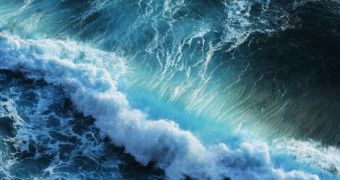NOAA researchers are now busy reviewing data collected in mid-June, and hope to clear the mystery of whether or not New Jersey's coastline got hit by a tsunami-like wave on June 13.
According to eyewitnesses reports and preliminary information, it appears that a rare type of tsunami did in fact hit this part of the US East Coast on said date.
Unlike run-off-the-mill tsunamis (i.e. those caused by movements of the seafloor), this one is believed to have been spawned by a storm that moved through the region and eventually worked its way offshore.
If this was the case, the rare wave was a so-called meteotsunami.
USA Today reports that, although weather conditions are the ones most likely to have fostered the freak wave that hit New Jersey on June 13, researchers are not yet ready to rule out the possibility that some other phenomenon contributed to the formation of the meteotsunami.
“There was a strong weather system that moved from across the eastern U.S. that day, then moved offshore New Jersey,” reads a statement issued by Paul Whitmore, the current director of the West Coast/Alaska Tsunami Warning Center in Palmer, Alaska.
“There's still a possibility that there may have been some other source involved,” Paul Whitmore further argued.
Whereas tsunamis triggered by earthquakes and powerful storms can grow to impressive sizes, this one measured just 6 feet (1.8 meters) in height.
It did not cause any coastal damage, but it did knock three people that were hanging about on some rocks close to shore into the water.
Two of them were injured and needed medical attention, the same source informs us.
Barnegat Light, a borough in Ocean County, New Jersey, was the region this tsunami-like wave hit the hardest. As Paul Whitmore put it, “The impacts were greatest there in Barnegat Light.”
Specialists are still investigating the incident, and are expected to release more information in the days to come.

 14 DAY TRIAL //
14 DAY TRIAL //